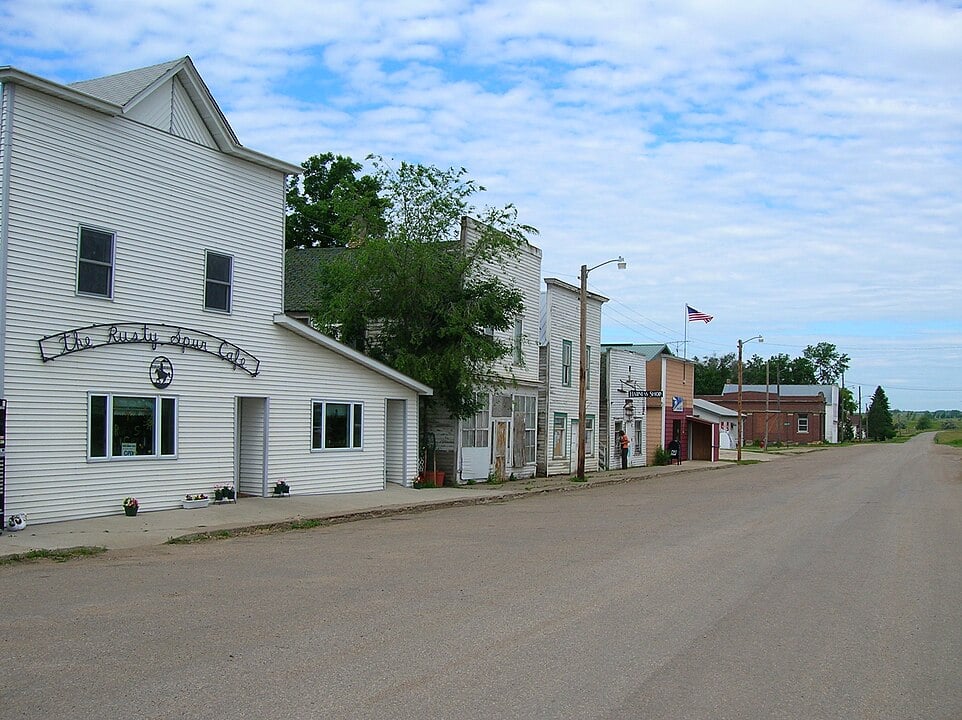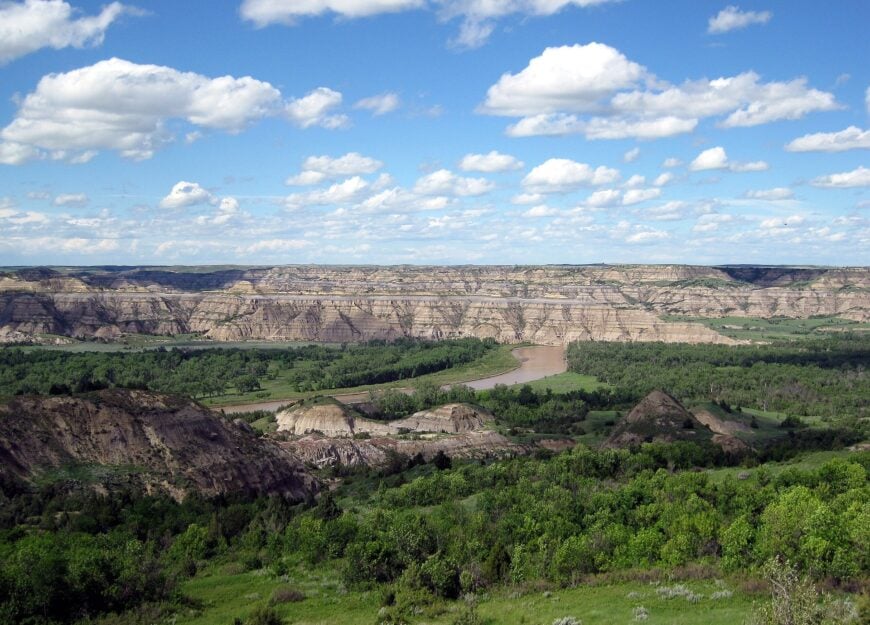
If you’re yearning for a place where the horizon stretches endlessly and the hustle of modern life feels a world away, the secluded towns of Southwest North Dakota might just be your perfect escape.
I’ve found that in these quiet communities, time seems to slow down, and the simplicity of rural living takes center stage. From the rolling prairies to the rugged Badlands, each town offers its own unique charm and a chance to reconnect with nature and yourself.
Join me as we count down the 25 most secluded towns in this tranquil corner of the country, each one a hidden gem waiting to be discovered.
25. Leith – A Prairie Crossroads with Whispered History
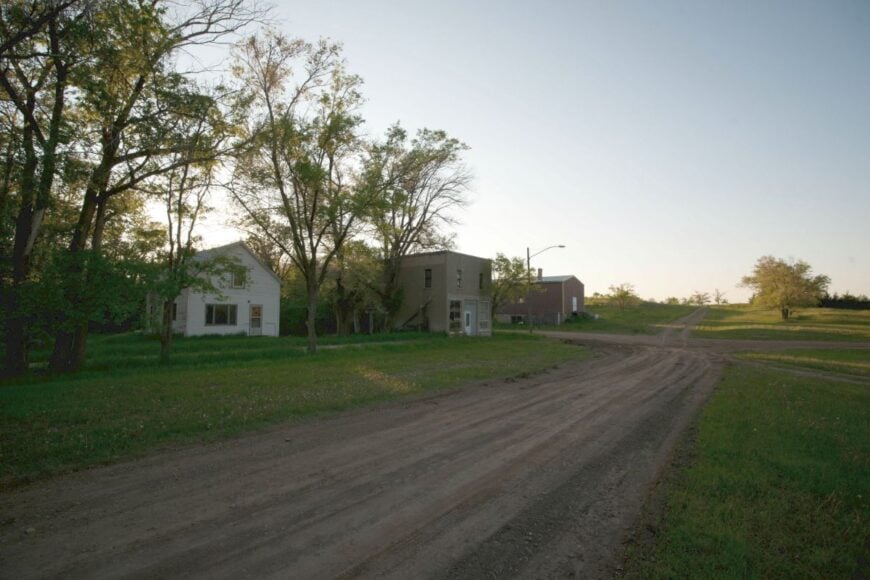
Leith is a ghostly-quiet settlement of fewer than 20 souls, its grid of streets lined with empty lots, fading houses, and tall grass bending in the wind. What keeps it secluded is its small size and its distance from any bustling hub—just a crossroad surrounded by wheat fields and sky.
The vibe here is eerie yet peaceful, where the prairie seems to reclaim every fencepost. Visitors might pause to photograph old buildings, wander dirt lanes, or take in the endless horizon stretching unbroken in all directions. Farming once sustained the town, but today it’s a near-forgotten outpost where silence rules.
Standing in Leith, you feel the weight of time as tangibly as the steady prairie breeze. It’s the kind of place that reminds you how small towns can simply fade back into the land.
Where is Leith?
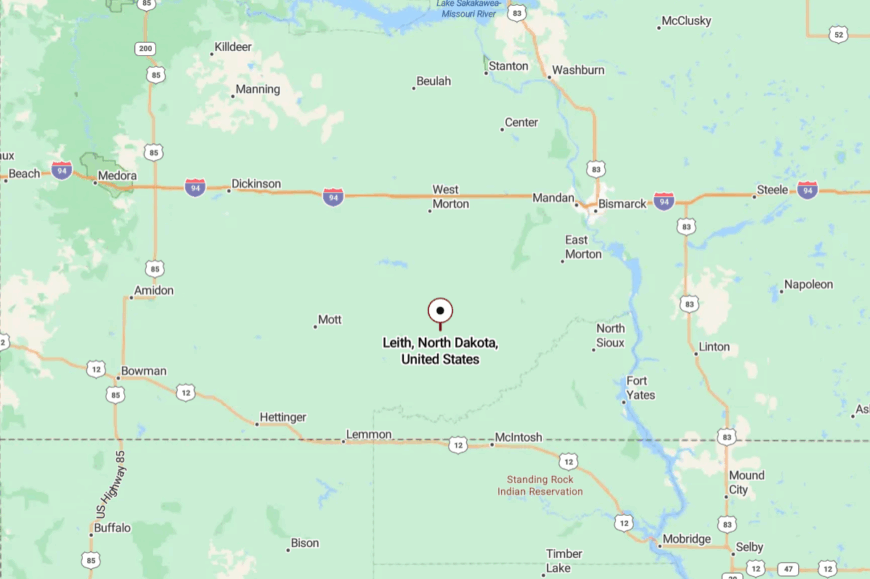
Leith rests in Grant County, about 16 miles south of Carson and 60 miles southwest of Bismarck. It sits near Highway 49 but far from major interstates, reachable by county roads that narrow into prairie lanes.
The journey passes grain silos and open fields that seem to stretch forever. By the time you arrive, it feels as though you’ve slipped into a forgotten corner of the plains.
24. Bentley – Prairie Silence on a Forgotten Rail Line
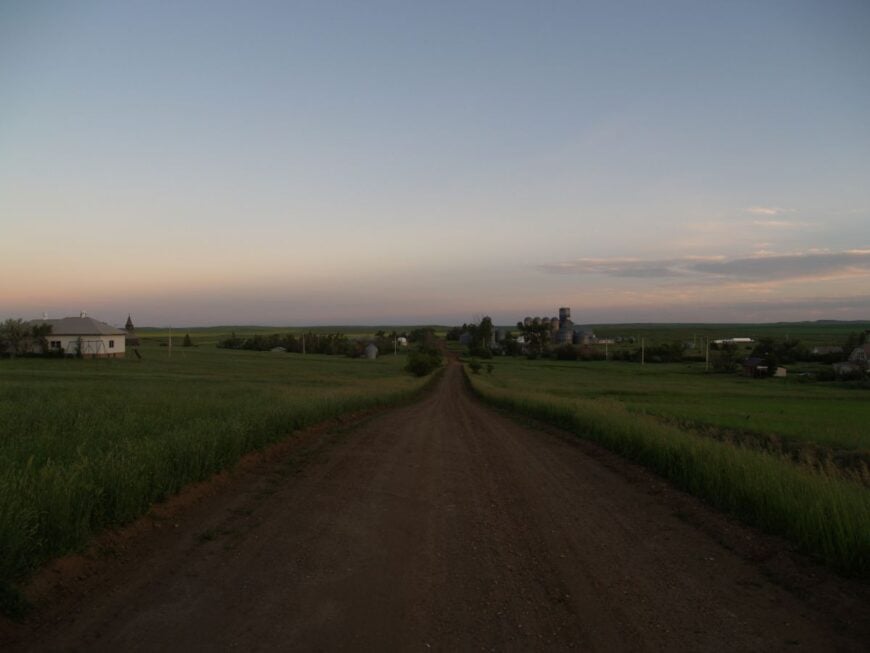
Bentley is an unincorporated hamlet where the railway no longer stops and fewer than a dozen homes dot the rolling prairie. Its isolation comes from the miles of farmland and open rangeland that surround it on all sides.
Life here is rustic and unhurried, with grain elevators standing as monuments to busier times. Travelers who pass through might spot antelope grazing on the edge of town, stop at a roadside church, or trace the old rail grade that whispers of history.
Farming is the only livelihood, and residents keep close to the land. The prairie winds are the loudest sound here, carrying the scent of cut hay and earth. Bentley is the sort of place where you can hear your own footsteps echo.
Where is Bentley?
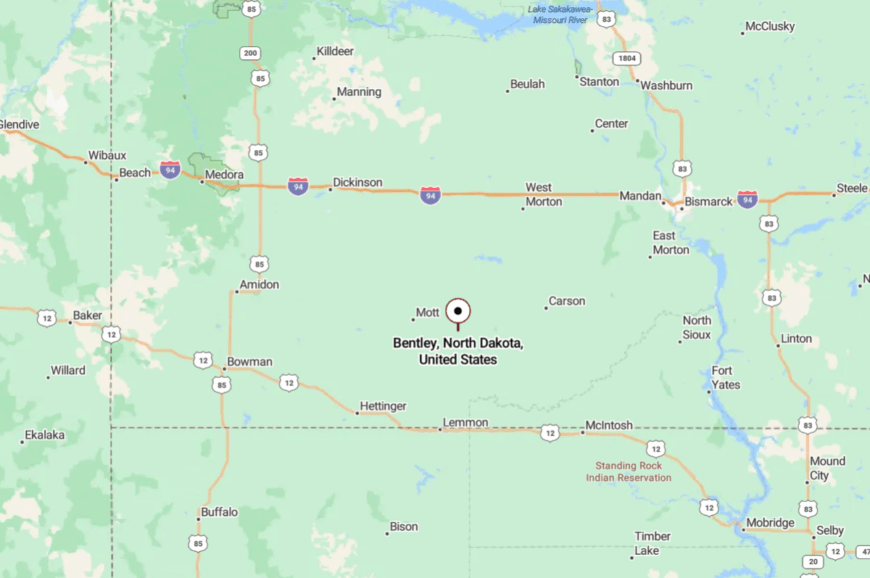
Located in Hettinger County, Bentley sits about 8 miles northwest of New Leipzig. It is accessible only by gravel roads that weave through farmland, with Highway 21 lying several miles away.
The trip in feels like crossing a sea of grass, with no signs of cities on the horizon. Arriving at Bentley, you sense the rare hush of true remoteness.
23. Raleigh – A Hamlet Tucked in Hills and Fields
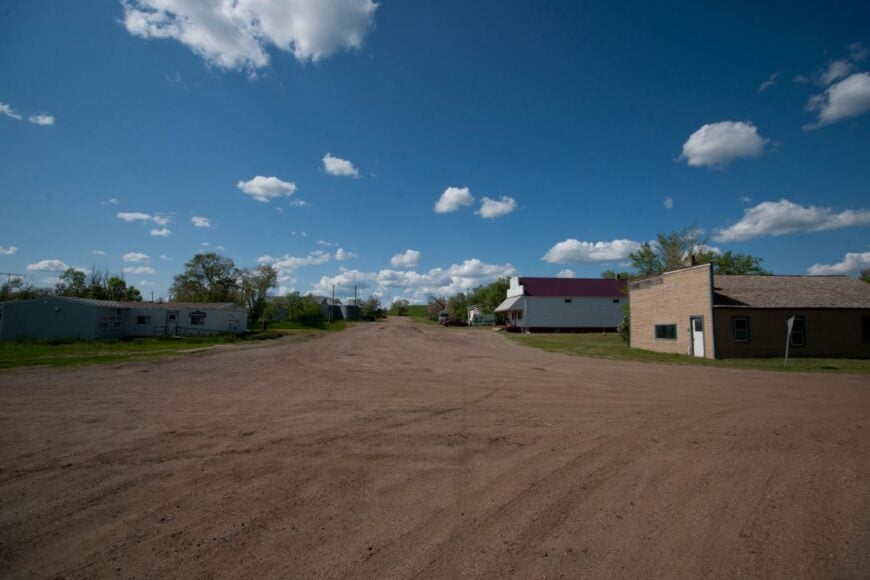
Raleigh is a quiet unincorporated town where the hills of Grant County dip into wide wheat fields. With a few dozen residents, it feels timeless, as if little has changed in decades.
The local grain elevator still hums during harvest, but most days are marked by the sound of meadowlarks and the occasional pickup passing through. Visitors find charm in its modest church, scenic drives, and the way the horizon rolls gently in every direction.
Farming anchors life here, tying families deeply to the soil. At dusk, porch lights blink on beneath a sky lit with a thousand stars. Raleigh is less a destination than a reminder of how quiet country living can be.
Where is Raleigh?
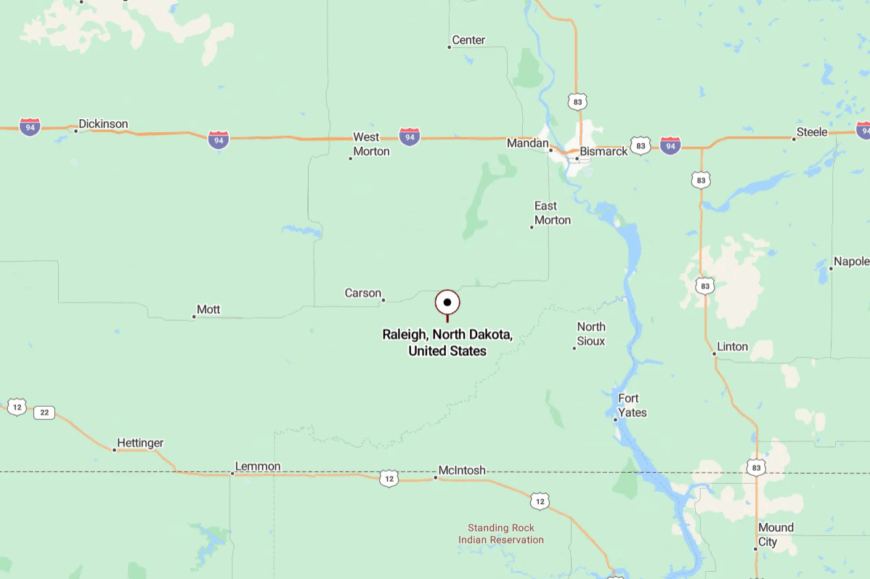
Raleigh lies in Grant County, about 40 miles south of Mandan. It’s reached by Highway 6, then county roads that wind through farmland and pastures.
The approach is long and open, with views that stretch across prairie ridges. By the time you crest the last hill, Raleigh feels like a secret tucked in the folds of the land.
22. Selfridge – A Borderland Village on the Prairie

Selfridge rests close to the Standing Rock Reservation boundary, a small town of about 160 residents. Its seclusion comes from its position far from interstate highways, surrounded by wide fields and rolling grasslands.
The town vibe is friendly and close-knit, with a simple main street, a café, and a few quiet churches. Visitors can explore nearby prairie lakes, wander through town to admire local murals, or take a slow drive across the backroads.
Agriculture is the foundation here, with wheat and cattle shaping daily life. Nights are hushed except for coyotes calling from distant coulees. Selfridge feels like a borderland outpost, where community and solitude blend.
Where is Selfridge?
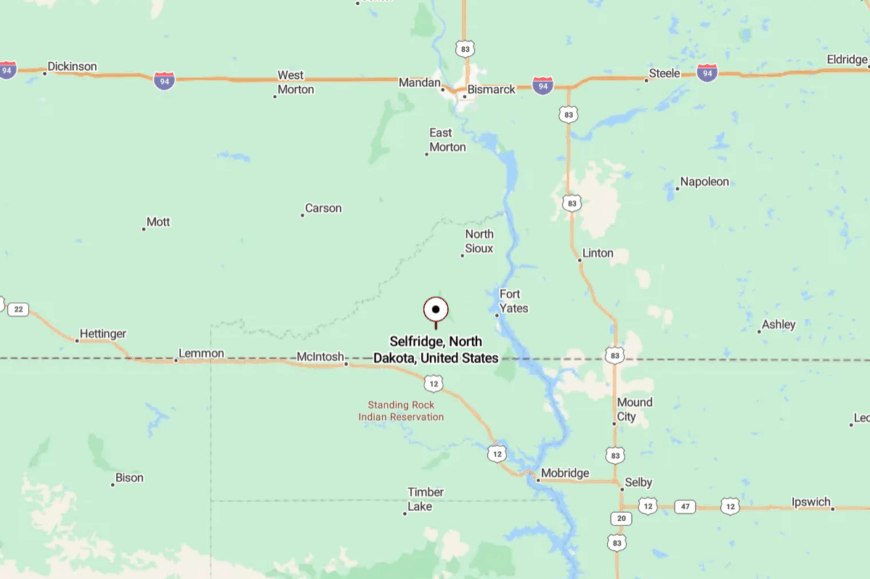
Located in Sioux County, Selfridge sits about 70 miles southwest of Mandan and close to the South Dakota line. It’s accessible via Highway 6, then turning west onto smaller county roads.
The trip winds through open fields where grain elevators rise like landmarks in the distance. Arriving in Selfridge, the land feels endless, and the pace immediately slows.
21. Flasher – Small Town on the Prairie’s Edge
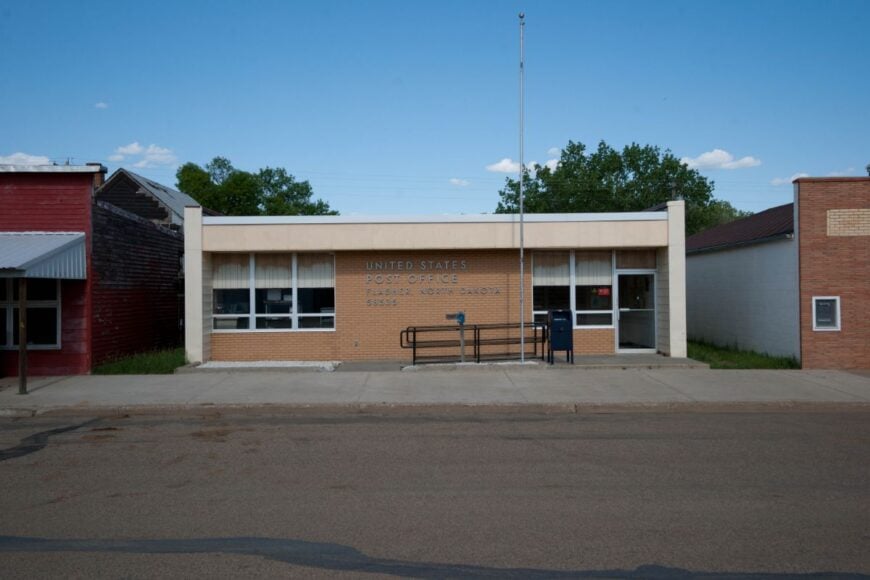
Flasher, with around 200 residents, sits quietly in the prairie hills of Morton County. Its seclusion stems from the fact that it’s miles from major cities and surrounded by open fields that stretch to the horizon.
The town has a historic main street, a few small shops, and a classic prairie-school atmosphere. Visitors can stroll the old railroad depot site, attend a small-town festival, or simply enjoy the quiet rhythm of the community.
Farming and ranching dominate the economy, and the people here know the land by heart. In the evening, the prairie sky blooms wide and unbroken, painting the town in silence and stars. Flasher offers a glimpse of prairie life untouched by hurry.
Where is Flasher?
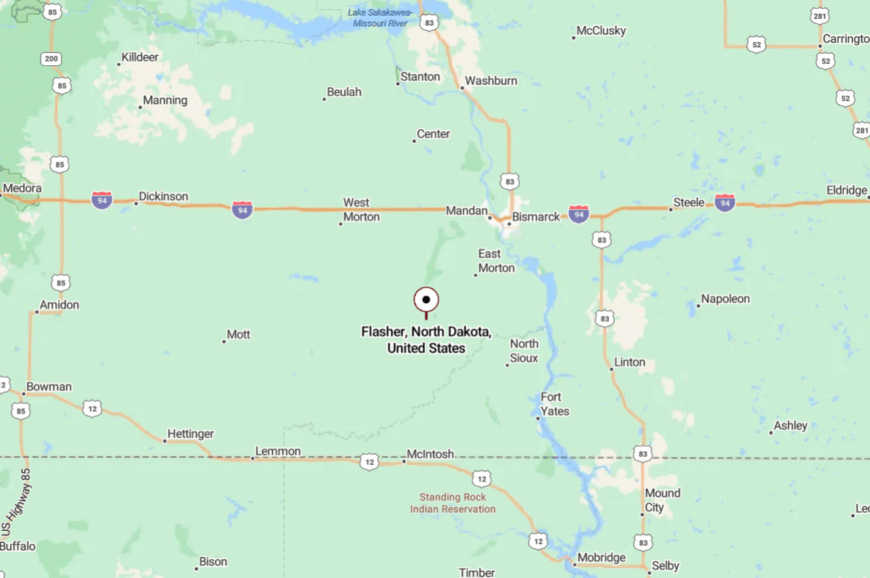
Flasher lies in Morton County, about 40 miles southwest of Bismarck. It’s reached by Highway 21, a two-lane route that winds through farmland and grassland.
The drive itself is a journey into stillness, as traffic thins with each passing mile. When you arrive, the horizon seems to fold around the little town like a protective cloak.
20. Carson – A Prairie Seat of Quiet
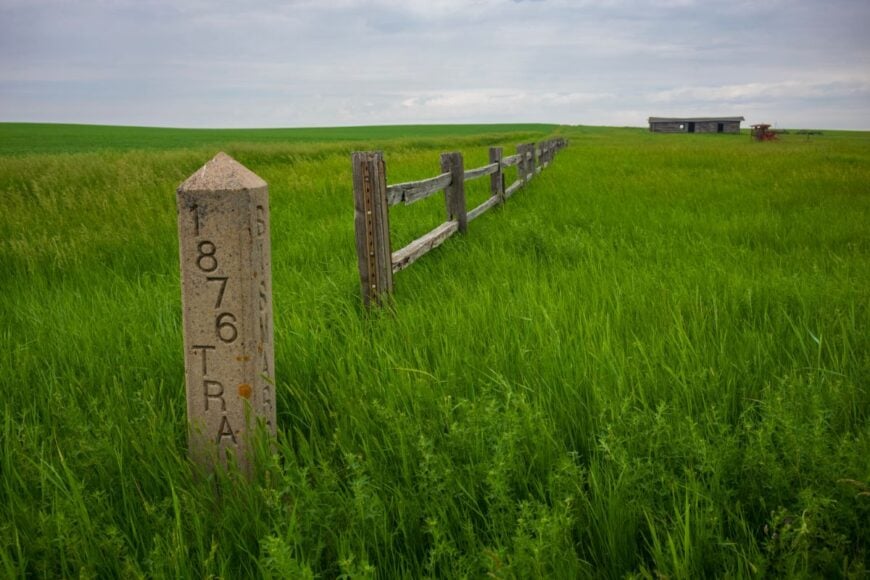
Carson is the county seat of Grant County, but with fewer than 300 residents, it feels more like a sleepy prairie stop than an administrative hub. Its seclusion comes from the endless farmland surrounding it and the absence of through-traffic.
The town vibe is unhurried, centered on its modest courthouse, a small café, and grain bins that tower over the landscape. Visitors can stop at the county museum, admire century-old churches, or take a scenic drive into nearby rolling hills.
Farming remains the lifeblood of the community. In Carson, you feel how government and farmland coexist in the gentlest way possible. It’s the kind of place where quiet truly governs.
Where is Carson?
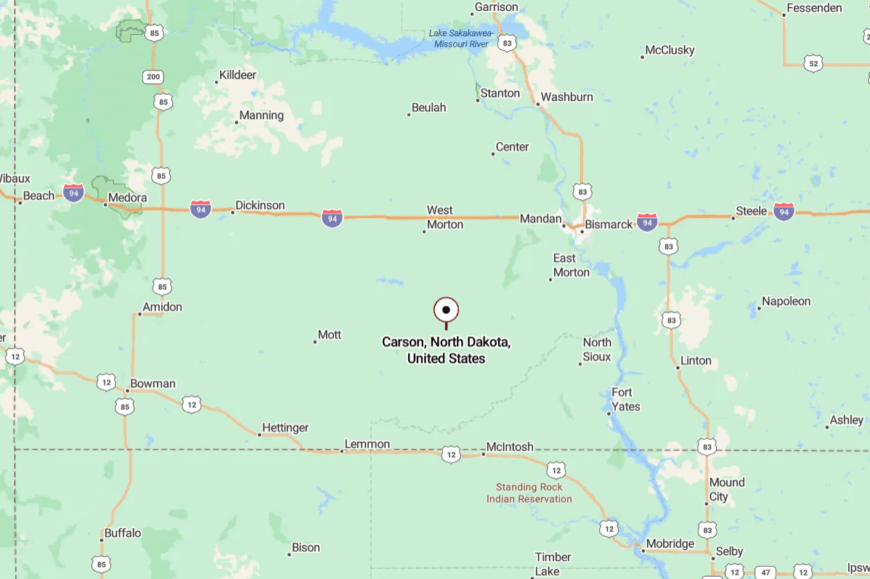
Carson is in Grant County, about 60 miles west of Bismarck. It sits along Highway 21, far removed from interstates or large urban areas.
The road there winds across prairie ridges and low coulees, dotted with farmsteads. By the time you reach Carson, the land feels wide and the air unhurried.
19. Glen Ullin – Railroad Echoes on the Plains
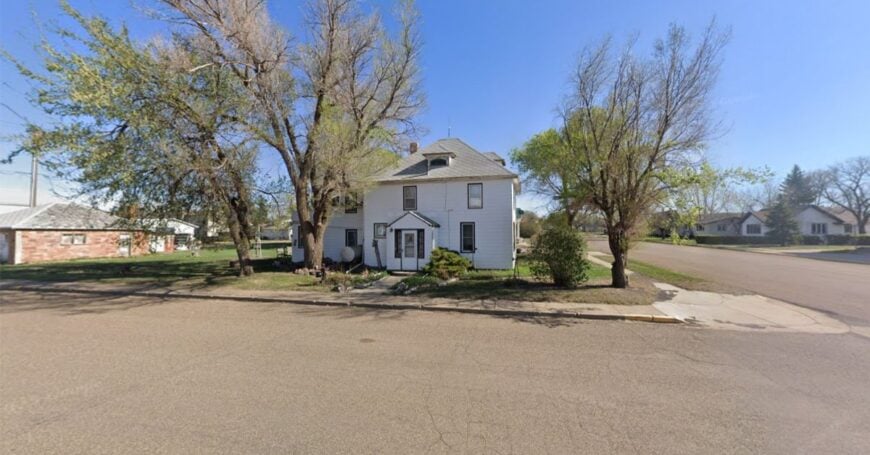
Glen Ullin, with around 700 residents, feels bigger than many prairie hamlets but remains isolated by its geography and distance from major hubs. The railroad built it, and echoes of that history still linger in its old depot and grain elevators.
Its vibe is a blend of heritage and simplicity, where main street shops serve both locals and travelers who venture off the interstate. Visitors might explore the historic church, picnic by Lake Tschida, or hike trails in the nearby prairie hills.
Farming and ranching are the economic backbone. Nights fall gently, with the glow of porch lights soft against a wide, quiet horizon. Glen Ullin is the kind of place where past and present quietly overlap.
Where is Glen Ullin?
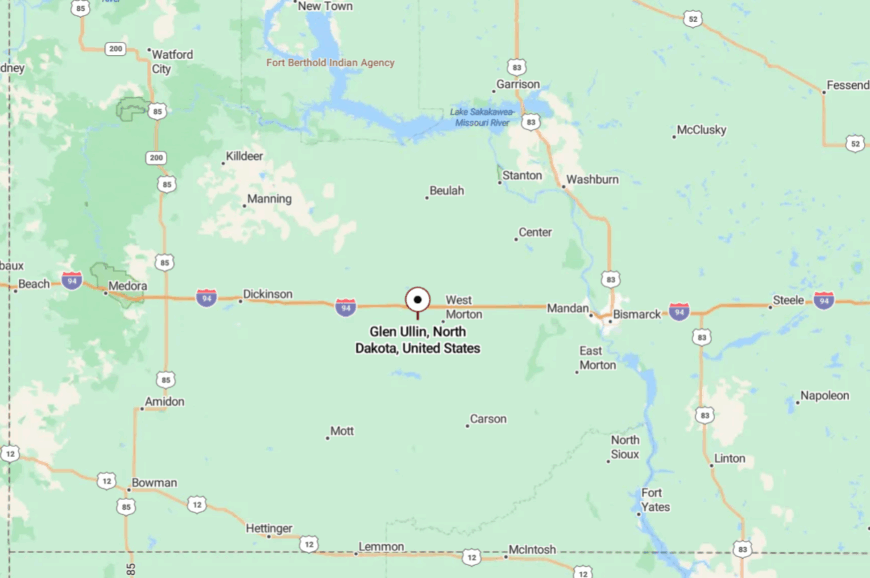
Located in Morton County, Glen Ullin is about 55 miles west of Bismarck. It’s just off Interstate 94 but feels distant once you leave the highway and roll into town.
The prairie rises in soft hills around the community, creating a natural buffer. By the time you park on main street, the bustle of the interstate has already faded to silence.
18. Almont – Quiet Bend Along the Railroad
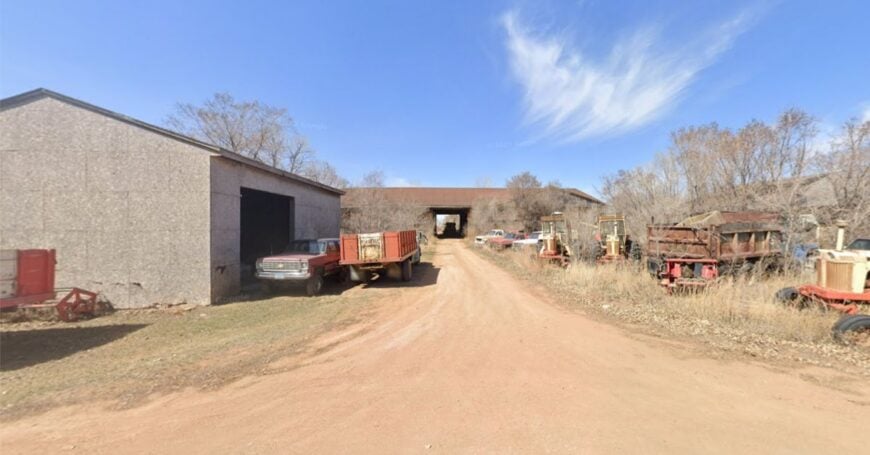
Almont is a tiny settlement of fewer than 100 people, a place where the railroad once promised growth but the prairie reclaimed its stillness. Its seclusion lies in its size and the open space that envelopes it.
The vibe is deeply rural, with weathered storefronts and a scattering of homes spread across the landscape. Visitors might stop to photograph old structures, wander gravel roads, or watch trains rumble by on distant tracks.
Farming is the heartbeat here, with fields of wheat and hay circling the town like a golden sea. Life moves gently, marked by seasons rather than clocks. Almont feels like a quiet pause written onto the prairie.
Where is Almont?
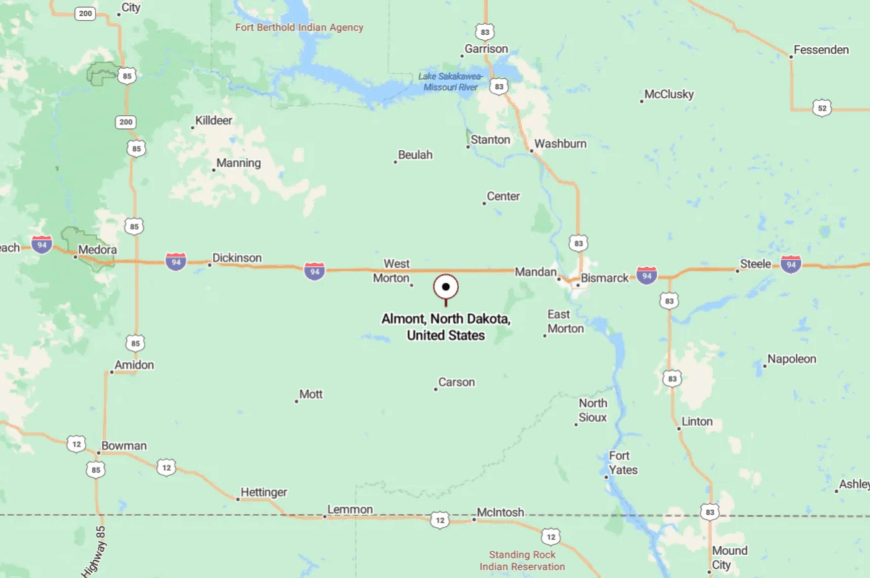
Almont is in Morton County, about 45 miles southwest of Mandan. Reached by county roads off Highway 21, the journey takes you across farmland and through shallow river valleys.
The last miles are slow and scenic, lined with fencelines and open fields. By arrival, it feels like you’ve left time itself waiting on the road behind.
17. Shields – Hamlet on the Cannonball River
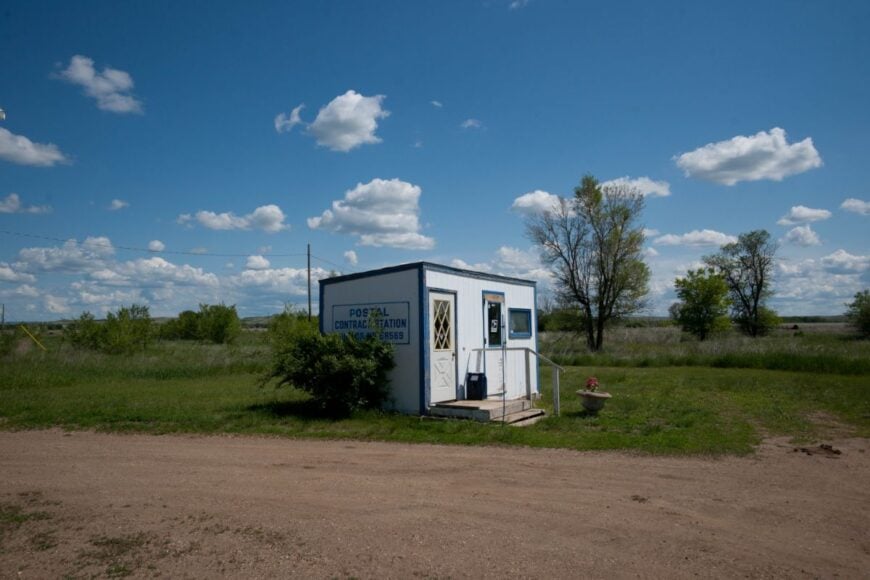
Shields is a near-forgotten town with just a handful of residents, perched quietly on the Cannonball River. Its seclusion is defined by its remote setting and the river valley that shields it from the outside world.
The vibe here is rustic and almost ghostly, with a few houses, an abandoned main street, and the soft sound of water moving past. Visitors might fish along the river, wander the remnants of town, or trace trails into the hills.
Farming and ranching keep a few families tied to the land. The silence of Shields is profound, broken only by wind in cottonwoods and the murmur of the river. It’s the kind of place that feels half-remembered by time.
Where is Shields?
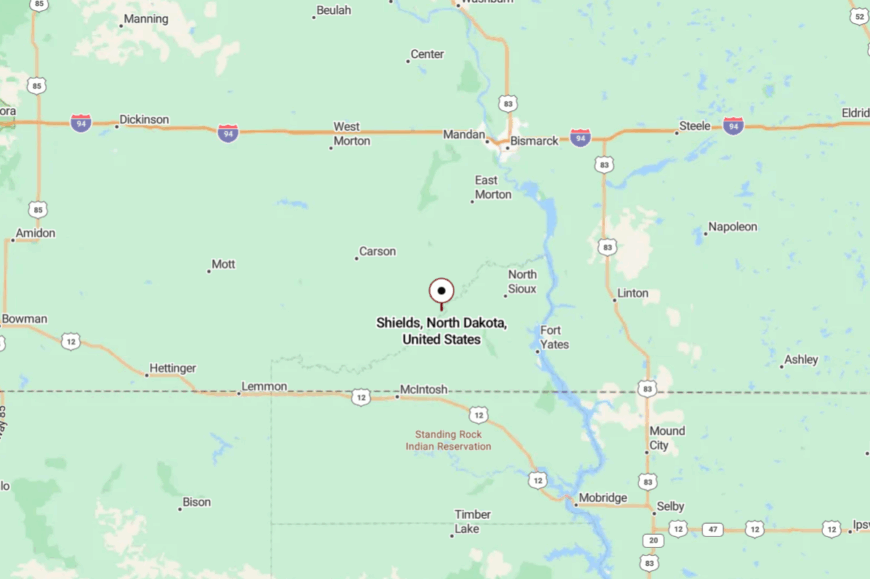
Shields lies in Grant County, about 20 miles east of Carson. It is reached by county roads that descend into the Cannonball River valley.
The route is slow and winding, past pastures and river breaks. By the time you reach Shields, the outside world feels far above and away.
16. Elgin – Rolling Prairie’s Hidden Town

Elgin, with about 600 residents, feels like a lively hub tucked deep in the rolling prairies of Grant County. Its seclusion is clear the moment you drive in: wide fields, low hills, and the absence of highways leading anywhere fast.
The town vibe is neighborly and unpretentious, with a modest main street, a school, and a few small businesses that sustain daily life. Visitors can explore the local museum, attend the annual cowboy poetry gathering, or fish in nearby farm ponds.
Agriculture is the foundation here, with wheat, cattle, and hay surrounding the town like a living border. Evenings bring quiet streets and skies painted in prairie color. Elgin is the sort of place that shows small-town America still holds its breath.
Where is Elgin?
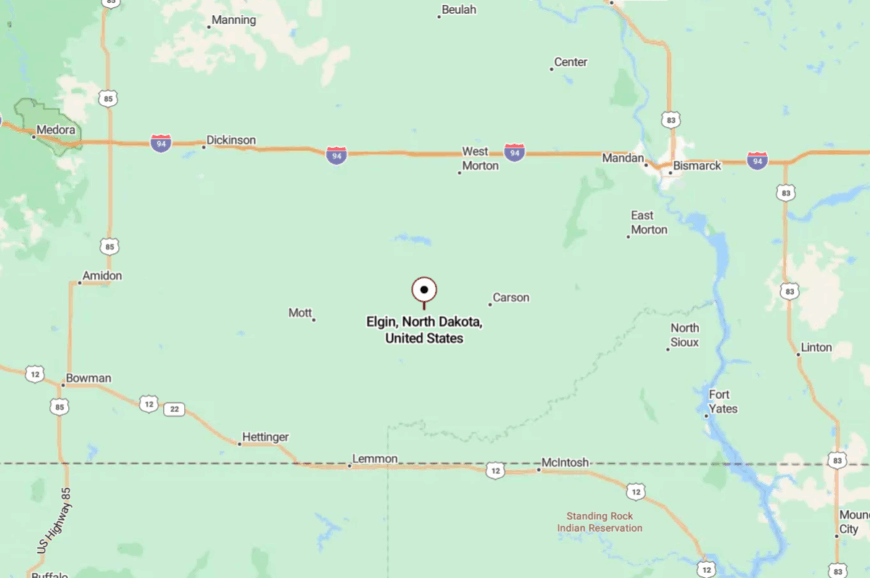
Elgin sits in Grant County, about 90 miles southwest of Bismarck. It is reached by Highway 49, a two-lane road that winds for miles across open fields.
The approach is long and lonely, with few towns to break the journey. By the time you roll into Elgin, it feels like you’ve stepped into a self-contained prairie world.
15. Mott – “The Prairie Capital” with Quiet Pride

Mott, known locally as the “Prairie Capital,” has about 700 residents and carries the heart of a town much larger. Yet it remains secluded, surrounded by wide stretches of farmland and far from any urban center.
The vibe is proud and steady, with a tidy main street, a courthouse square, and old brick storefronts. Visitors might fish in the Cannonball River, visit local diners, or explore antique shops tucked into historic buildings.
Farming and ranching provide the backbone of life here, tying generations to the land. In the evening, the streets grow calm and the prairie sky opens wide. Mott feels like a hometown you didn’t know you had.
Where is Mott?
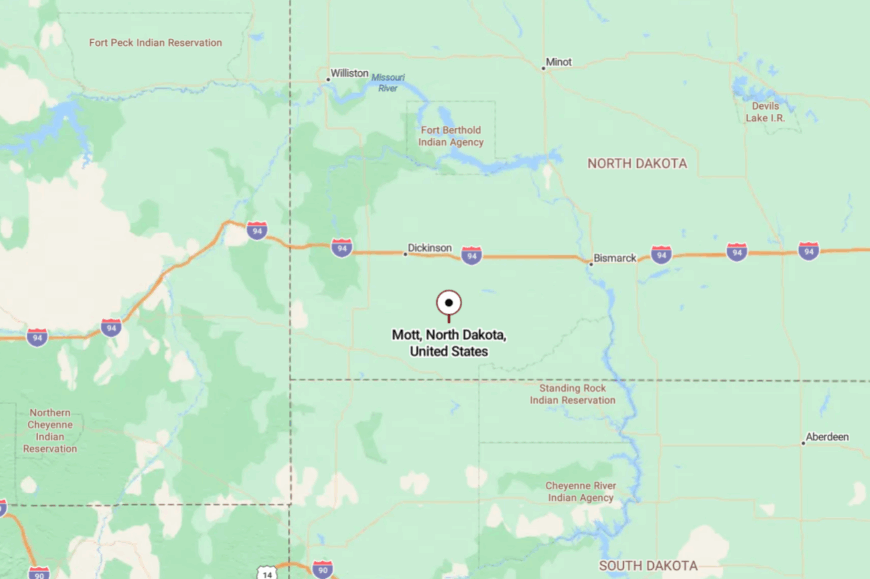
Mott is located in Hettinger County, about 75 miles southwest of Bismarck. The town is reached via Highways 21 and 8, two-lane routes that cross miles of open prairie.
The drive is long but filled with prairie vistas and small creeks. By arrival, Mott feels both substantial and completely apart from the wider world.
14. Hebron – Brick City on the Prairie
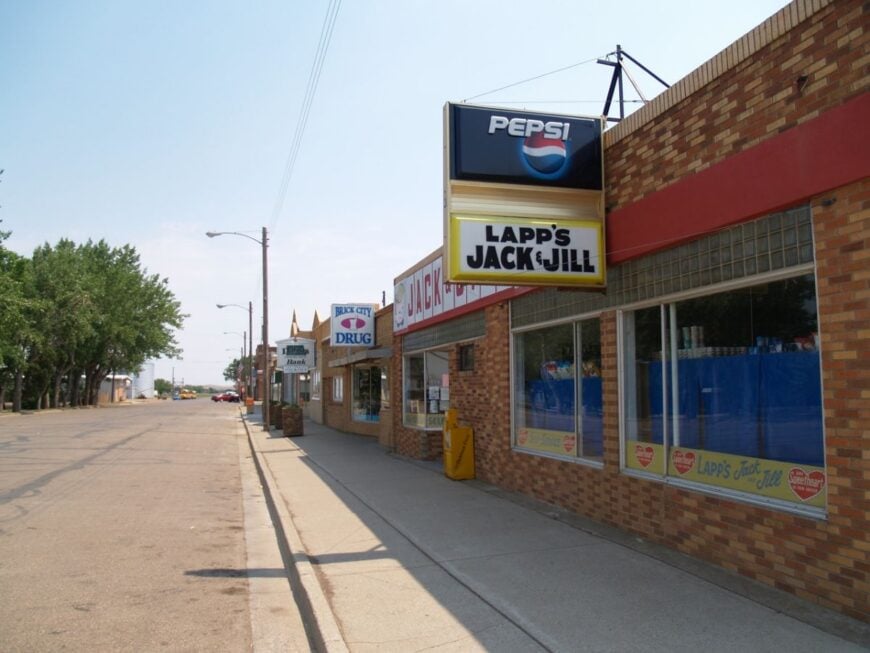
Hebron, with about 800 residents, is famed for its historic brickyard, which still produces bricks that built much of North Dakota. Despite its industry, Hebron is tucked away in rolling prairie, far from major hubs.
The town vibe blends heritage with calm, where sturdy brick buildings line quiet streets. Visitors can tour the Hebron Brick plant, wander the small museum, or attend a summer festival in the park. Farming and brickmaking anchor life here, though the pace stays easy.
Evenings bring the sound of trains in the distance and the hush of prairie winds. Hebron is a place where industry and isolation coexist in a uniquely peaceful way.
Where is Hebron?
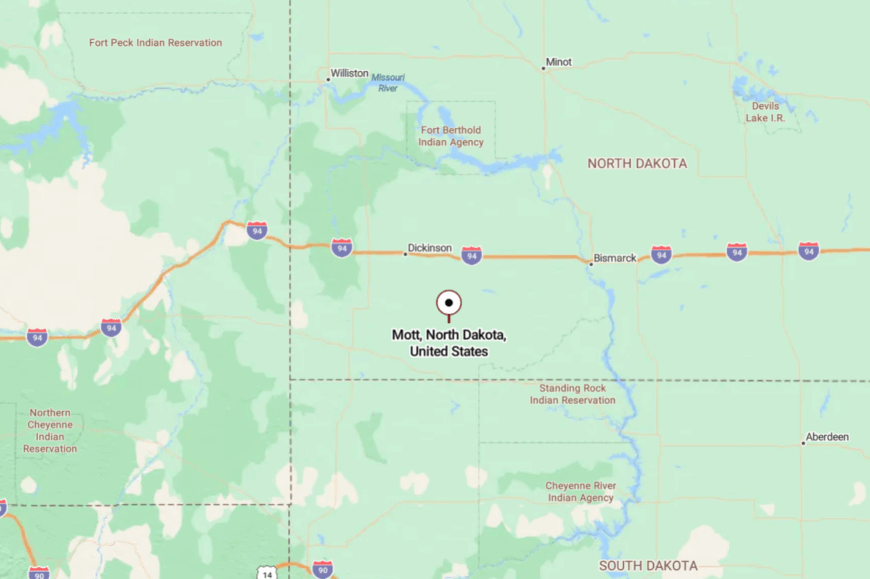
Hebron sits in Morton County, about 80 miles west of Bismarck along I-94. Despite its interstate access, the town feels tucked away, as the highway skirts past without intruding.
Hills and farmland frame the community, sheltering it in quiet. By the time you step onto main street, the rush of the interstate feels far behind.
13. Golden Valley – Small Town with Endless Skies
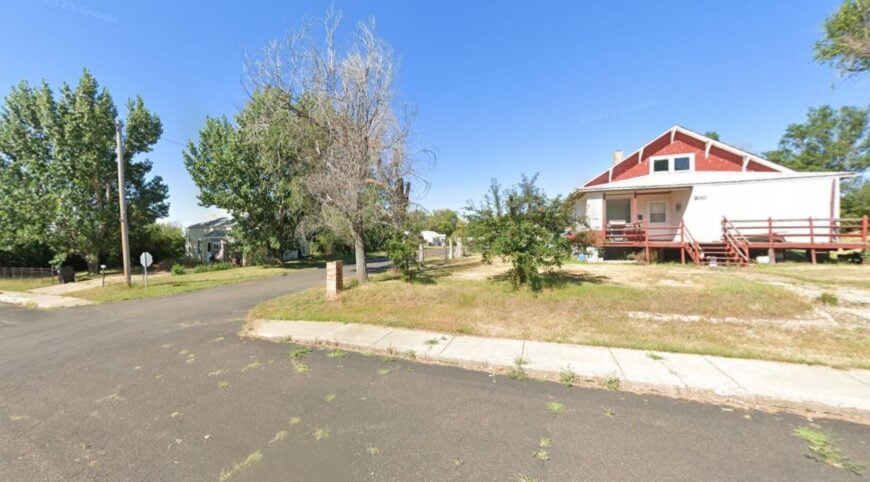
Golden Valley, with fewer than 200 residents, is a settlement where prairie skies seem endless and uncluttered. Its seclusion comes from its location away from highways and its small, tightly-knit scale.
The vibe is simple and rustic, with a handful of homes, a church, and a grain elevator marking its presence. Visitors might take a scenic drive into the nearby hills, photograph the open landscapes, or chat with locals at the small café.
Farming is the sole economy here, weaving generations to the soil. Evenings drop quickly into stillness, and the Milky Way pours across the sky. Golden Valley reminds you just how vast the prairie can feel.
Where is Golden Valley?
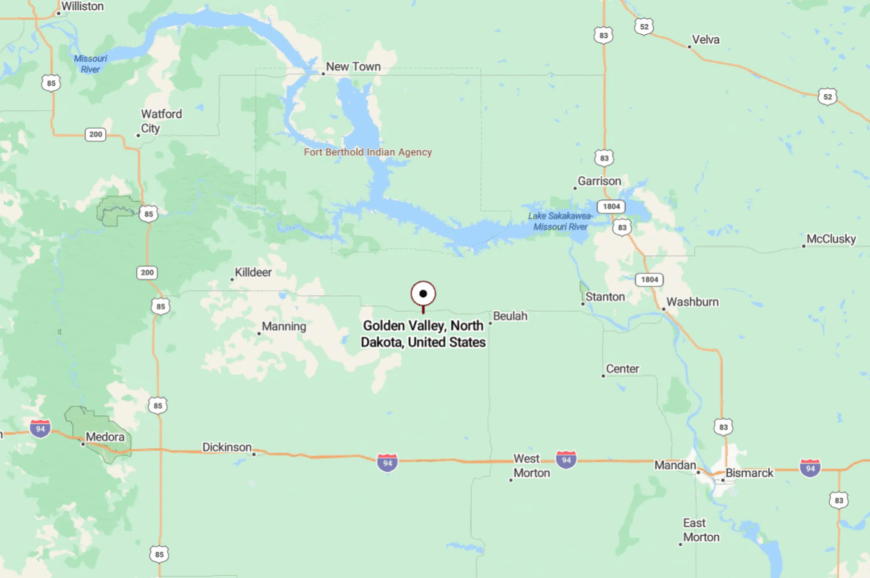
Golden Valley lies in Mercer County, about 35 miles west of Hazen. It is accessed by county roads that cut across farmland and open prairies.
The drive is spare and uncluttered, with the land opening wide around you. By the time you arrive, the town feels like an island in a sea of grass.
12. New Salem – Home of the Giant Holstein

New Salem, with about 900 residents, is best known for Salem Sue, the world’s largest Holstein cow statue that looks out over the prairie. Despite its roadside fame, the town itself feels calm and unhurried, with quiet neighborhoods and a proud farming heritage.
Visitors can hike the hill to Salem Sue, tour the local history museum, or attend a summer fair on main street. Agriculture drives the local economy, with dairy and grain central to its identity.
Evenings here feel timeless, with porch conversations echoing under the open prairie sky. New Salem is proof that even landmarks can stand watch over peaceful small-town life.
Where is New Salem?

New Salem is in Morton County, about 30 miles west of Bismarck along Interstate 94. Though close to the highway, it feels worlds away once you leave the exit and roll into town.
The community nestles against low hills that frame the horizon. By the time you’re standing under Salem Sue, the bustle of the interstate is just a memory.
11. Zap – Prairie Hamlet with a Story
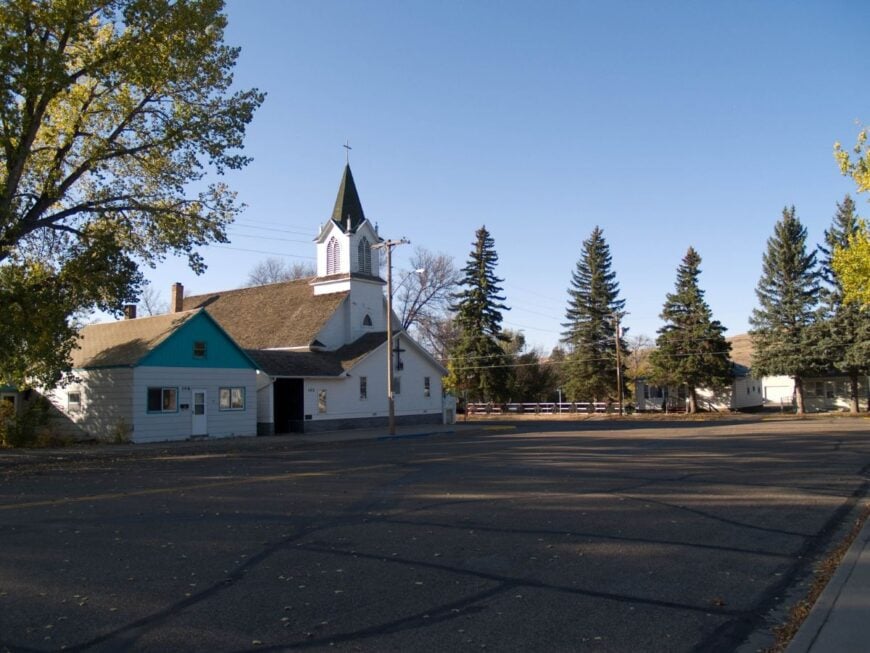
Zap, a village of just over 200, gained fame decades ago for a one-time counterculture festival but today has settled back into prairie quiet. Its seclusion lies in its location off main routes, surrounded by rolling farmland and coal country hills.
The town vibe is rustic and easygoing, with a small main street, a post office, and a bar where locals gather. Visitors might hike trails in nearby Knife River Valley, fish small ponds, or simply wander through the historic streets.
Coal once played a role in its economy, but farming remains central today. Zap carries a quiet resilience, a reminder that every prairie town has its story.
Where is Zap?
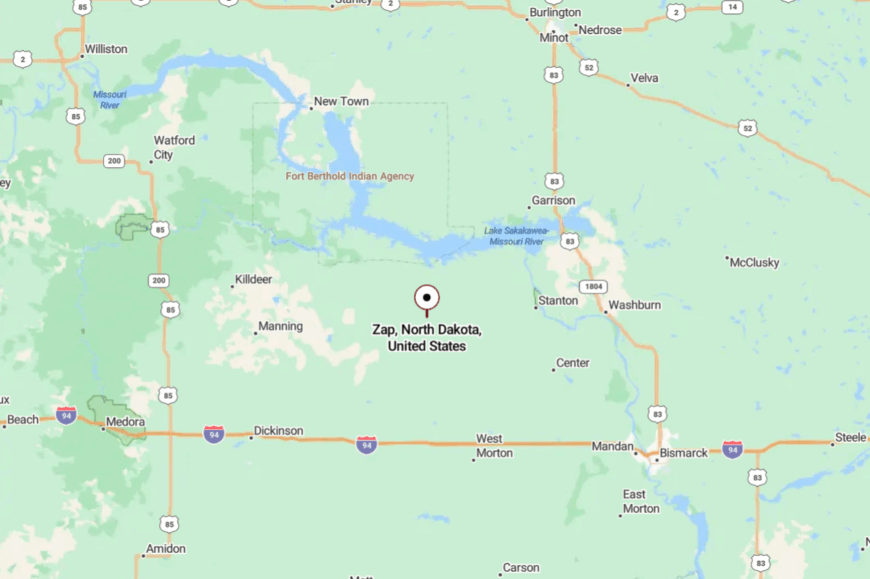
Zap sits in Mercer County, about 60 miles northwest of Bismarck. It is reached by Highway 200, then smaller county routes that weave through hills and prairies.
The drive is quiet, with more cattle than cars along the way. By arrival, Zap feels tucked away, known only to those who seek it.
10. New Leipzig: Seclusion Amidst the Prairie
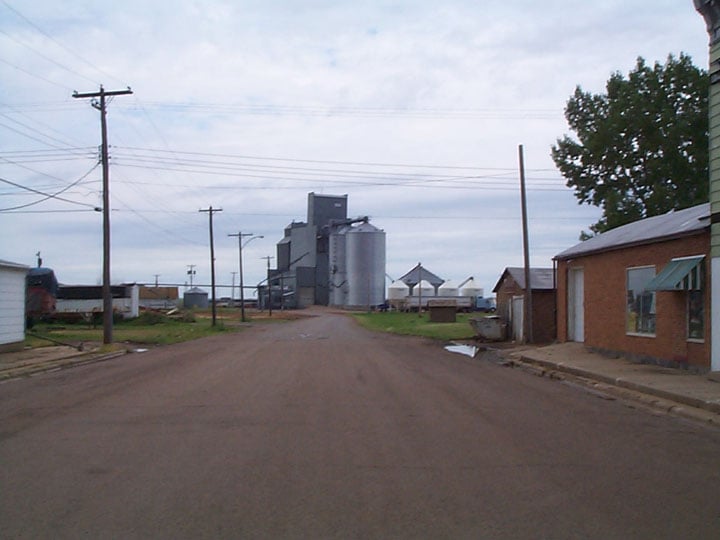
New Leipzig, with a population of just over 200 residents, offers a tranquil escape nestled in the heart of the North Dakota prairie. I find the town’s peaceful streets and friendly locals make it a perfect spot to unwind.
The main activities here revolve around community events and enjoying the vast open spaces, like taking leisurely walks or going on scenic drives. Agriculture is the primary industry, with many residents involved in farming and ranching.
What makes New Leipzig truly secluded is its distance from major urban centers and the surrounding expansive farmland that stretches as far as the eye can see. It’s a place where time seems to slow down, and you can really appreciate the simplicity of rural life.
Where is New Leipzig?
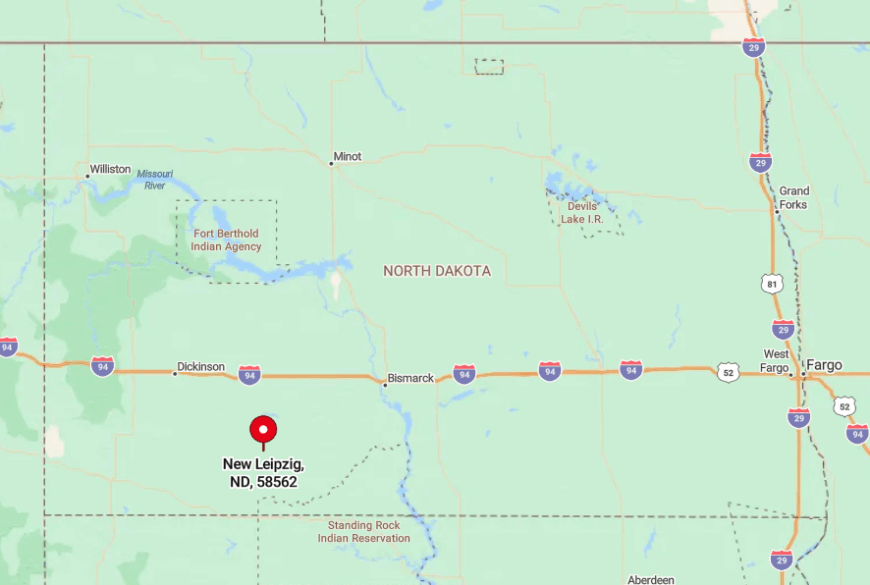
Located in Grant County, New Leipzig sits in the southwestern part of North Dakota, about 80 miles from the nearest significant city, Bismarck. The town’s seclusion is enhanced by the miles of prairie that envelop it, creating a serene buffer from the hustle and bustle of larger towns.
Getting there involves a scenic drive along Highway 21, which further emphasizes the remote nature of this charming community. I love how the journey itself feels like a step back into a quieter, more peaceful time.
9. Chilton’s Quiet Retreat
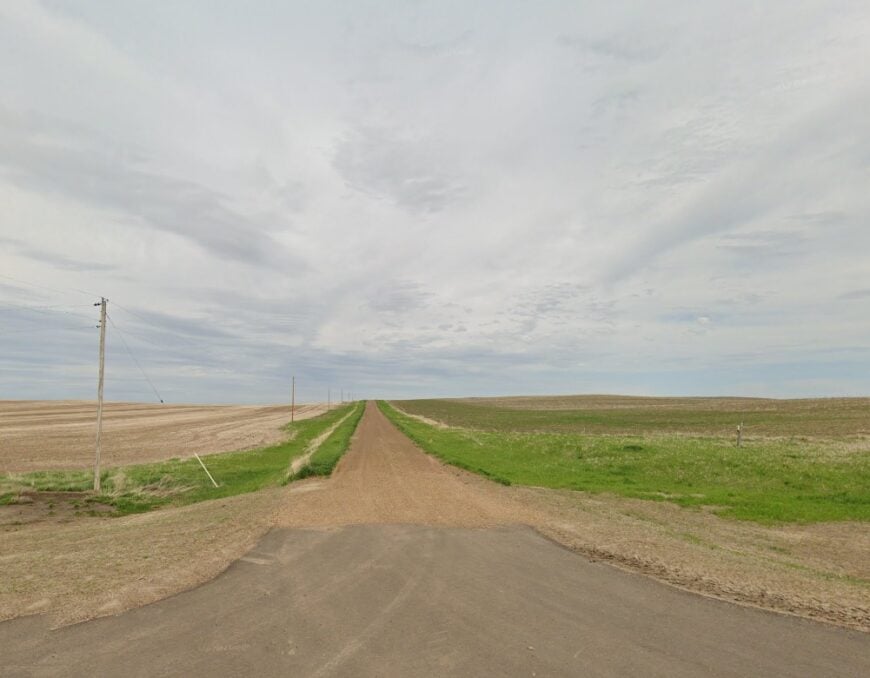
Chilton is a small town that embodies the charm of rural America, offering a peaceful escape for those looking to step away from the bustle of larger cities. With a tight-knit community and a relaxed pace of life, I find its simplicity refreshing.
The surrounding countryside features rolling farmland and quiet roads, making it a perfect place to take in the beauty of nature. While Chilton doesn’t have a booming industry, agriculture plays a central role in the local economy.
Family-owned farms dot the landscape, contributing to the town’s character and sustaining its way of life. Its rural isolation fosters a sense of tranquility and connection to the land that is increasingly rare in today’s fast-paced world.
Where is Chilton?
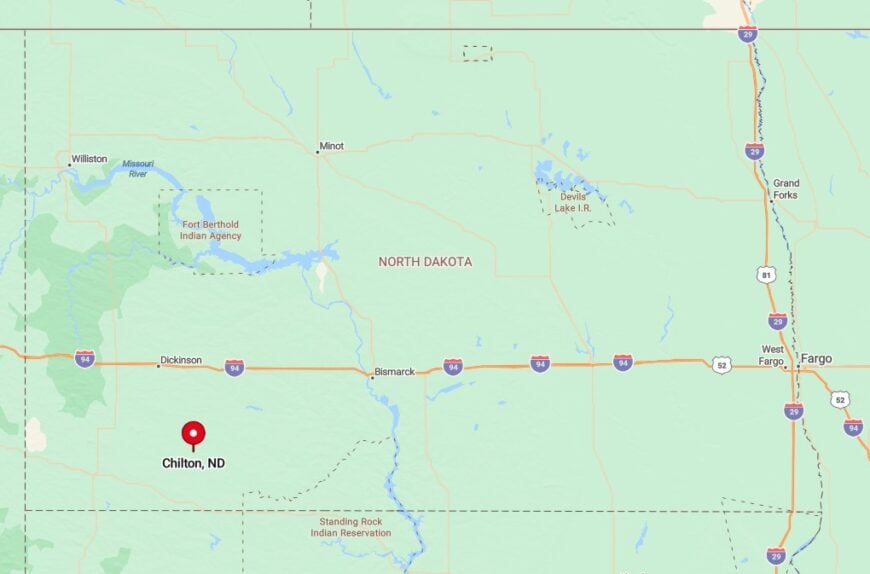
Located in Calumet County, Chilton sits in eastern Wisconsin, serving as a welcoming hub for those exploring the scenic beauty of the region. The town offers a blend of historical charm and modern conveniences, yet remains small enough to maintain its quiet appeal.
Traveling to Chilton takes you through stretches of farmland and peaceful roads, reinforcing the feeling of escape. The journey is as relaxing as the destination itself, reminding me why small towns hold such a special place in the heart of America.
8. Haley: Off the Beaten Path
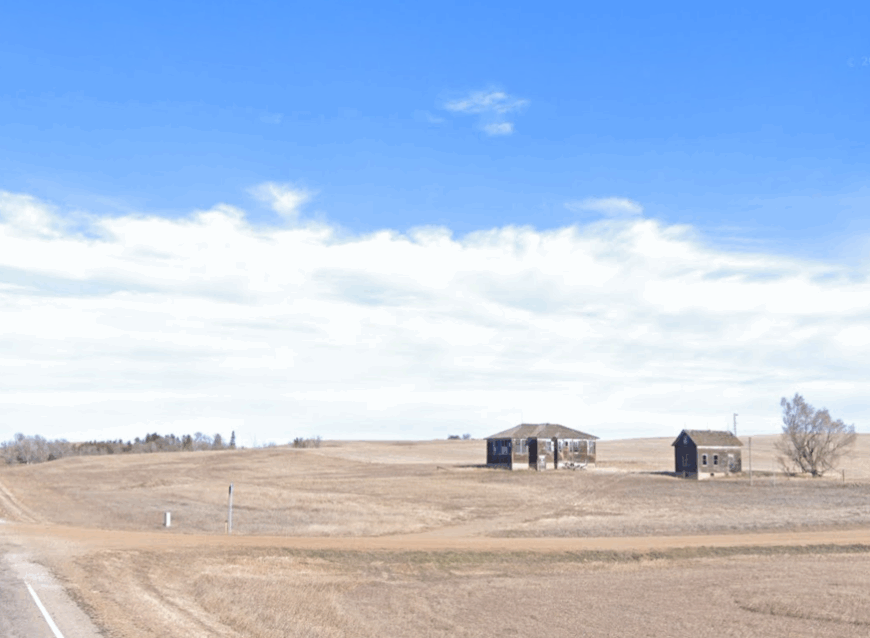
Haley is an unincorporated community with a small number of residents, offering unmatched privacy and a rustic lifestyle. The lack of commercial development means there’s plenty of open space to enjoy, such as hiking, bird watching, and simply soaking in the quiet atmosphere.
There’s little to no industry here, with residents often involved in agriculture or commuting to nearby towns for work. What makes Haley secluded is its minimal footprint and absence from most maps, making it a true hidden gem in North Dakota.
Where is Haley?
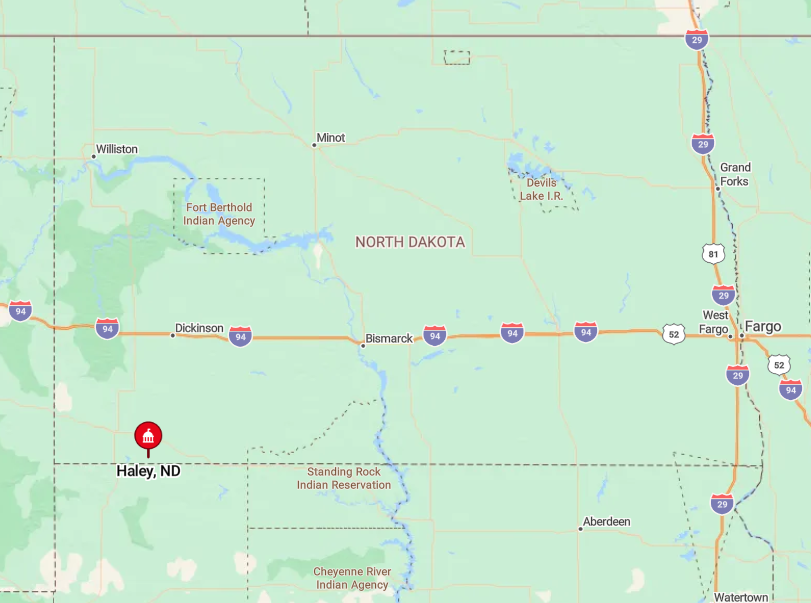
Located in Bowman County in southwestern North Dakota, Haley sits near the South Dakota border. Accessed primarily via rural county roads, reaching Haley requires a bit of navigation through the rolling plains.
Its seclusion is due to its distance from major highways and population centers, and the surrounding ranchlands that provide a natural barrier. I appreciate how getting to Haley feels like uncovering a secret spot known only to a few.
7. Regent: Art in Isolation
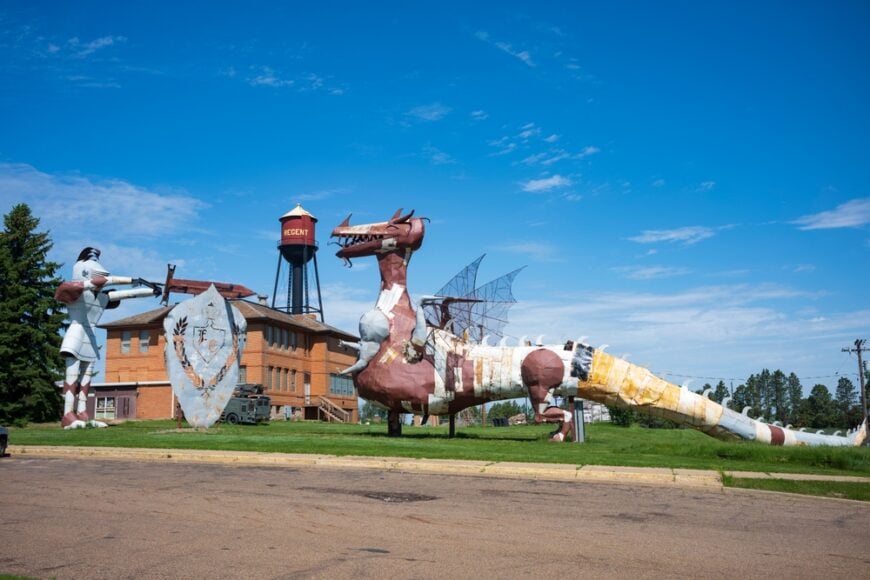
Regent is home to approximately 160 residents and is renowned for the Enchanted Highway—a collection of massive metal sculptures that stretch along the road leading to town.
I find the combination of art and rural charm here truly captivating. The main industries include agriculture and tourism spurred by the Enchanted Highway’s unique attractions.
Regent’s secluded nature comes from its small size and location amid vast farmlands, where the quiet countryside envelops the town in serenity.
Where is Regent?

Sitting in Hettinger County, Regent is located about 30 miles south of Interstate 94, accessible via Highway 21. The town’s isolation is underscored by the scenic drive along the Enchanted Highway, where large stretches of land lie between small towns.
Getting there is part of the experience, as you pass by the iconic sculptures that stand against the expansive sky. For me, the journey to Regent is as enchanting as the town itself, highlighting the beauty of North Dakota’s rural landscapes.
6. Reeder’s Rural Bliss
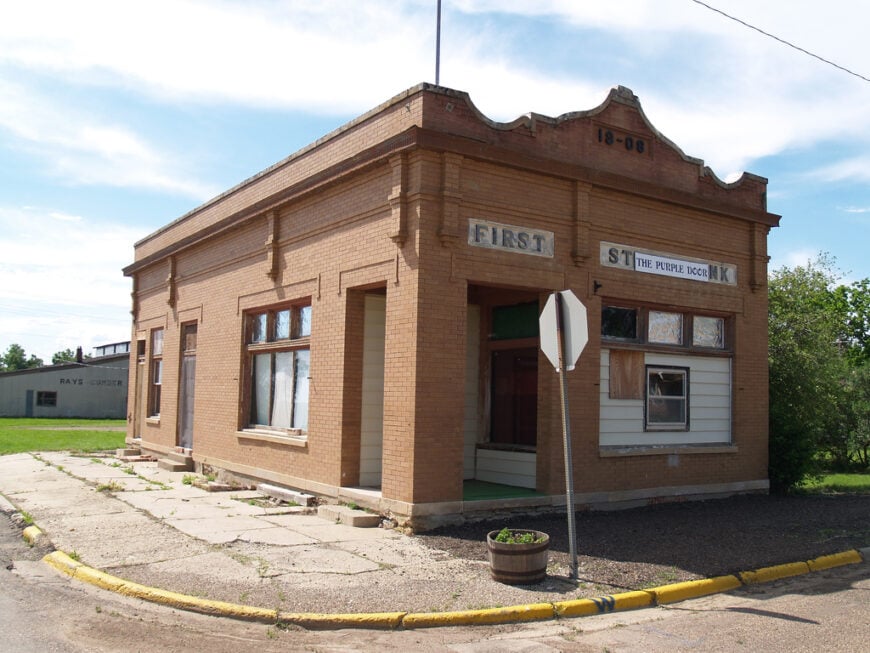
With a population of around 160, Reeder offers a peaceful retreat characterized by its friendly community and simple way of life. The town provides opportunities to enjoy the open prairies, such as hunting, fishing, and exploring the charming local museum dedicated to regional history.
Agriculture dominates the local industry, with many residents engaged in farming and ranching. Reeder’s seclusion stems from its low population density and surrounding farmlands that create a buffer from the outside world.
Where is Reeder?

Located in Adams County, Reeder is positioned along Highway 12 in southwestern North Dakota. The town’s remote feel is amplified by the vast stretches of prairie that separate it from larger towns and cities.
Getting to Reeder typically involves a long drive through open country, where you’ll rarely pass another car. I always find that this peaceful journey sets the tone for a relaxing visit to a town that feels worlds away from the hustle and bustle.
5. Bucyrus: A Tiny Haven

Bucyrus is an unincorporated community with a population of fewer than 30 people, making it an ideal spot for those seeking ultimate seclusion. The lack of commercial establishments means it’s a place where you can truly disconnect and enjoy the quiet of the prairie.
Residents are primarily involved in agriculture, with vast stretches of farmland dominating the landscape. Bucyrus’s remote location far from commercial zones and major roads contributes to its peaceful environment.
Where is Bucyrus?
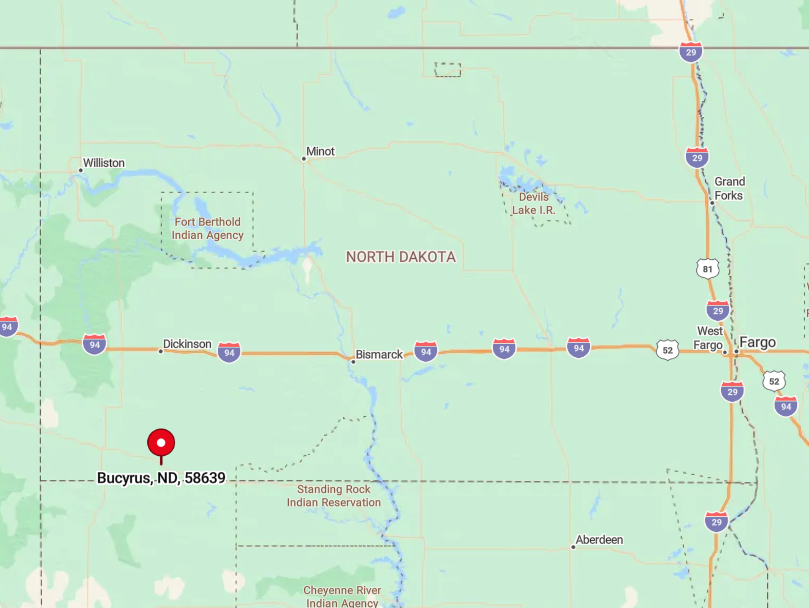
Situated in Adams County, Bucyrus is located just off Highway 12, about 8 miles west of Hettinger. The town’s seclusion is evident as you travel along the sparsely populated stretches of road that lead there.
The surrounding open spaces and minimal development accentuate the feeling of being far removed from urban life. For me, reaching Bucyrus feels like stepping into a simpler world where the horizon seems endless and time slows down.
4. Scranton’s Quiet Retreat
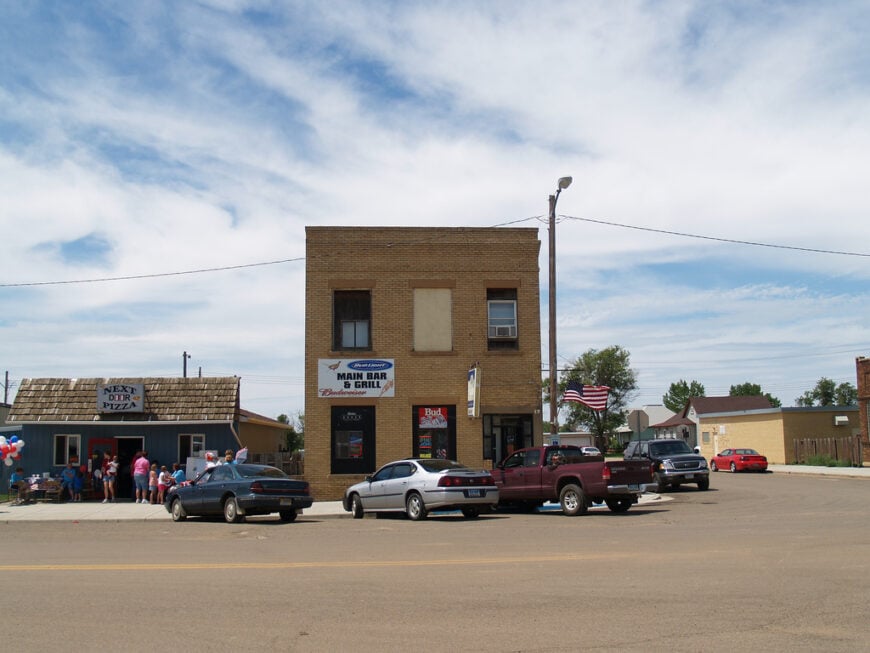
Scranton, home to approximately 280 residents, is a secluded town where community and tranquility go hand in hand. I enjoy visiting the local parks and engaging with the close-knit community at town events.
The main industries are agriculture and some local businesses that cater to the needs of residents. Its seclusion is due to its location away from major highways and urban noise, nestled in the gentle rolling hills of the prairie.
Where is Scranton?
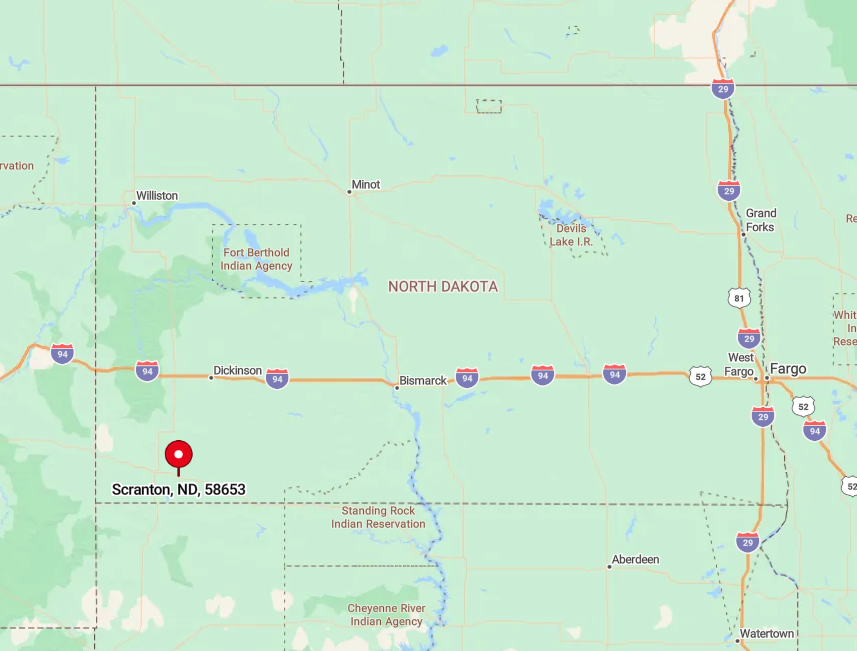
Located in Bowman County, Scranton sits along Highway 67 in southwestern North Dakota. The town is a fair distance from larger cities, enhancing its quiet atmosphere.
Access involves traveling through peaceful, open landscapes that reinforce the sense of retreat from the outside world. In my experience, the journey to Scranton offers a scenic and calming drive that’s an integral part of its secluded charm.
3. The Peaceful Solitude of Rhame

Rhame is a small community with around 160 residents, offering a serene lifestyle amidst the open prairies. Outdoor activities like bird watching, hiking, and enjoying the sunset over the grasslands are among my favorite things to do here.
The town’s economy revolves around agriculture, with many residents engaged in farming and ranching. Rhame’s seclusion is highlighted by its vast, undisturbed views and the minimal traffic passing through town.
Where is Rhame?
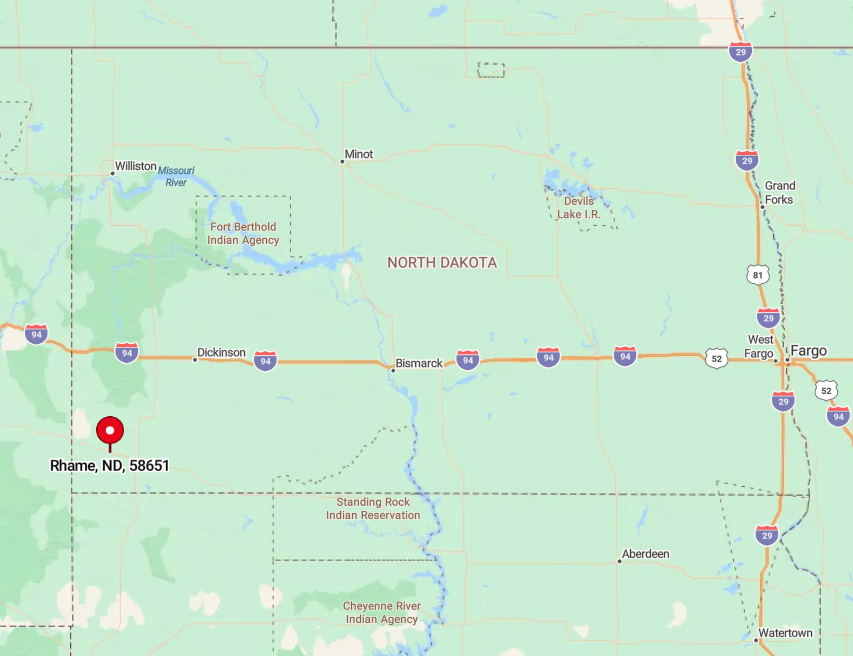
Situated in Bowman County, Rhame lies along Highway 12 in southwestern North Dakota. The town’s remote location is emphasized by the expansive prairie that surrounds it, with few interruptions to the natural landscape.
Getting to Rhame often involves a long drive through open country, which I find to be a meditative experience. The journey underscores the town’s isolation and the peaceful environment that awaits upon arrival.
2. Marmarth: Where Time Stands Still
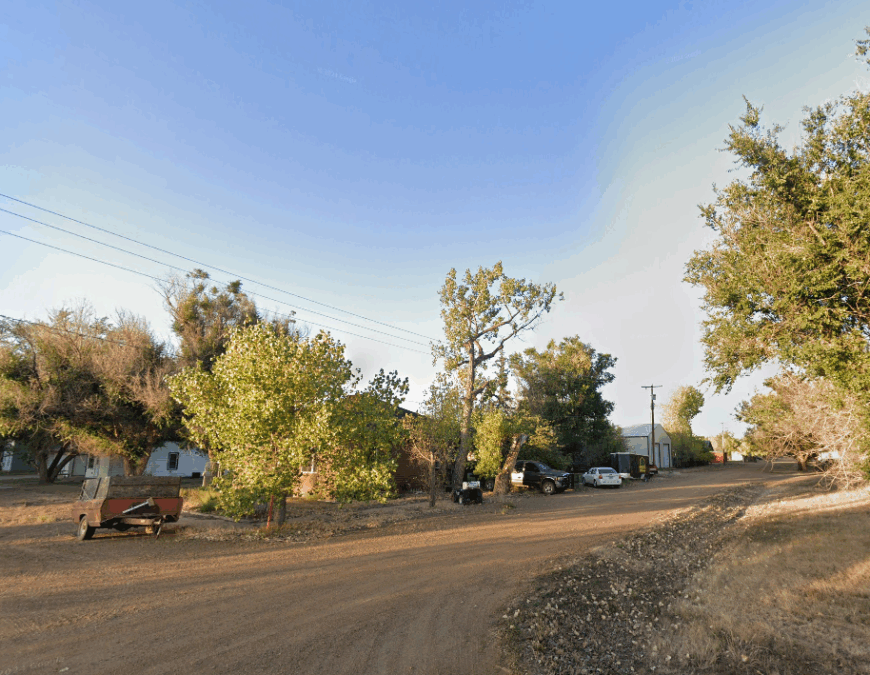
Marmarth, with a population of about 130 people, is a quiet town nestled along the Little Missouri River. I love exploring its historic buildings, like the Mystic Theatre, and enjoying the natural beauty of the surrounding badlands.
The town doesn’t have much industry, but some residents work in agriculture or the small tourism sector that caters to visitors intrigued by its history and landscapes. Marmarth’s seclusion is due to its significant distance from urban centers and the expansive landscapes that envelop it.
Where is Marmarth?

Located in Slope County, Marmarth sits near the Montana border in southwestern North Dakota. The town is accessible via Highway 12 but remains far from major highways and cities.
The surrounding badlands and the Little Missouri River create natural barriers that enhance its secluded feel. In my visits, I’ve found that the journey to Marmarth feels like a step back in time, where the distractions of modern life fade away.
1. The Hidden Charm of Amidon
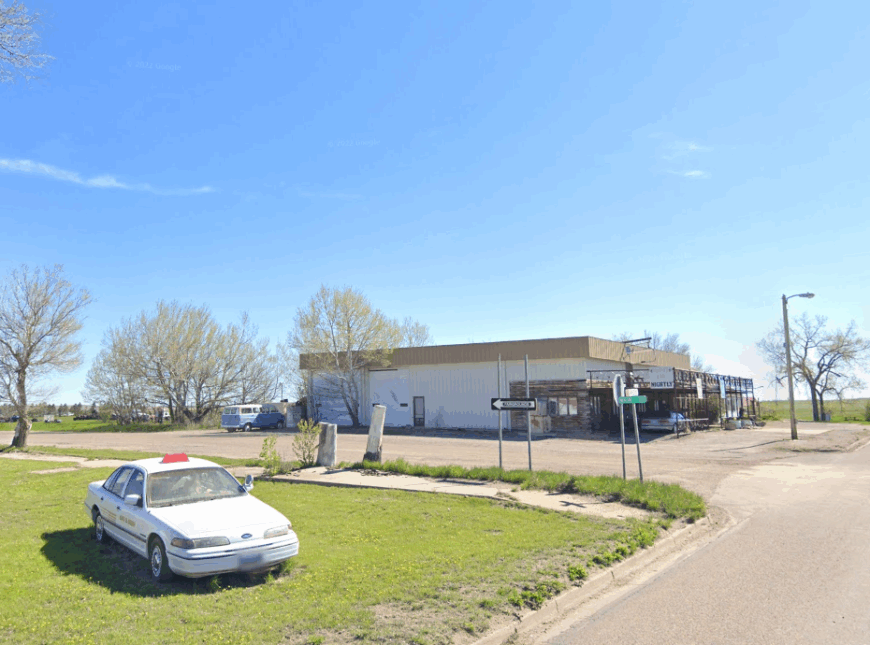
Amidon, boasting the title of the nation’s smallest county seat, has a population of just around 20 people. The town is surrounded by rolling hills and vast open spaces, making it perfect for anyone seeking ultimate seclusion.
I enjoy the tranquility of walking through the quiet streets and taking in the expansive views of North Dakota’s countryside. There isn’t much industry besides county government and agriculture, reflecting the simple, unhurried lifestyle of its residents.
Amidon’s secluded nature comes from its tiny population and the miles of prairie that separate it from other towns.
Where is Amidon?

Situated in Slope County, Amidon lies along U.S. Highway 85 in southwestern North Dakota. Despite being on a highway, the sparse traffic and vast stretches of uninhabited land contribute to its isolation.
Getting there involves traveling through scenic landscapes with few signs of civilization, which I find incredibly peaceful. Amidon’s remote location and minimal population make it a unique haven for those looking to truly get away from it all.
Exploring these secluded towns in Southwest North Dakota has always been a rejuvenating experience for me. Each offers a unique glimpse into a quieter way of life, surrounded by the natural beauty of the prairie and badlands.
Whether you’re seeking a peaceful retreat or simply want to experience a slower pace, these hidden gems provide the perfect escape from the demands of modern living.






